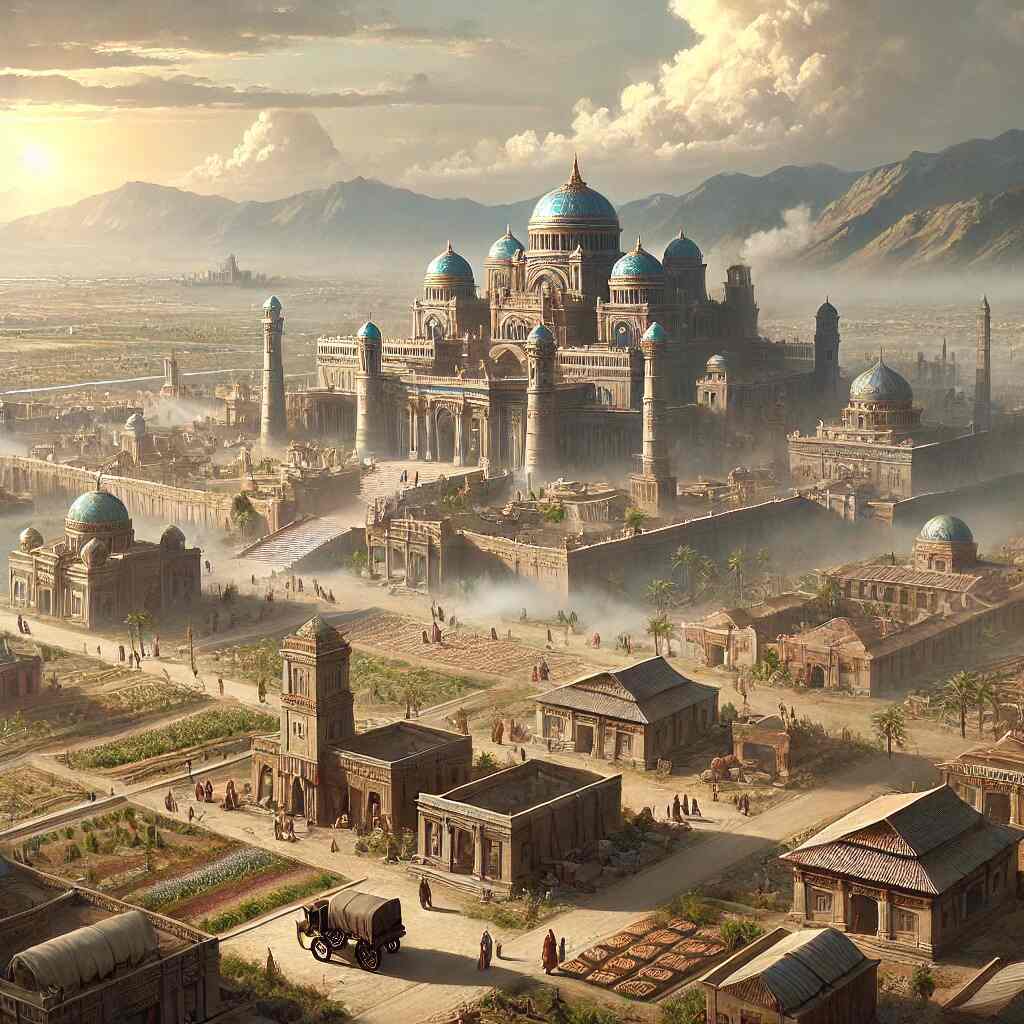Fall of Civilizations: Stories of Greatness and Decline, Paul Cooper
Paul Cooper’s Fall of Civilizations is both a captivating and educational read. The book masterfully blends historical facts with narrative storytelling, making it accessible to both casual readers and history enthusiasts. Cooper’s ability to draw lessons from the past and apply them to the present makes this a timely and thought-provoking book.
Fall of Civilizations: Stories of Greatness and Decline by Paul Cooper offers a detailed exploration of how once-great empires and civilizations reached their peaks and eventually fell. Through a blend of engaging storytelling and well-researched facts, Cooper examines the factors that led to the downfall of societies like the Roman Empire, the Maya, and the Khmer. This Fall of Civilizations history book review will explore how Cooper analyzes these collapses and the lessons they offer for today’s world. The author’s ability to draw parallels between the past and the present makes this a thought-provoking and educational read.

The Rise and Decline of Empires
In Fall of Civilizations, Cooper provides a well-rounded analysis of why civilizations fall, covering political, economic, and environmental factors. The author doesn’t stop at military defeats but digs into deeper causes, such as ecological mismanagement and social unrest. For example, the Khmer Empire’s collapse is attributed to a combination of poor water management and climate shifts, while the Maya’s fall is linked to overpopulation and resource exhaustion.
Key Factors Explored:
- Environmental degradation that impacted agricultural productivity.
- Political instability that weakened the power of central governments.
- Resource overuse leading to economic crises and societal breakdowns.
- Cultural fragmentation as civilizations grew too large to sustain cohesion.
This Fall of Civilizations book review underscores how Cooper’s interdisciplinary approach offers a comprehensive look at the downfall of these societies, showing how no single factor is ever fully responsible for the collapse of an empire.

Humanizing the Collapse of Civilizations
Cooper’s unique narrative style sets this book apart from other history accounts. Instead of focusing solely on rulers and political elites, the book also provides a glimpse into the lives of ordinary people who lived through the decline of their societies. By looking at how citizens of Roman Britain experienced the breakdown of the Roman Empire’s infrastructure and security, Paul Cooper provides an emotional depth that makes these historical events feel immediate and relatable.
The comprehensive book covers a wide range of civilizations, from the ancient Sumerians to the mighty Aztecs, with each story told from multiple perspectives. Cooper emphasizes that these falls were gradual, occurring over time, profoundly affecting the everyday lives of people. This focus on the human element makes the book accessible to readers who may not be well-versed in historical analysis, yet still seeks to understand how these events shaped history.
Lessons from History’s Mistakes
One of the book’s most striking moments comes when Cooper writes:
“Civilizations are not destroyed in a single stroke but in a slow, grinding process of decline that few recognize until it is too late.”
This powerful quote encapsulates the central theme of the book, which is that the fall of civilizations is rarely sudden. More often than not, societies decline gradually due to a combination of factors that accumulate over time.
This Fall of Civilizations book review highlights how Cooper uses historical examples to reflect on modern issues. The book draws clear parallels between the environmental and social challenges faced by ancient civilizations and those we face today. From climate change to political instability, the lessons learned from the past can offer guidance for the present and future. Cooper warns against complacency, suggesting that no society is too great to fall if it ignores the signs of decline.

Diverse Civilizations, Common Challenges
Civilizations discussed in the book:
- The Roman Empire, with a focus on the gradual fragmentation and eventual collapse.
- The Maya, whose achievements were undone by environmental factors and internal strife.
- The Khmer Empire, where intricate water management systems ultimately failed, contributing to its downfall.
- The Aztec Empire, which fell to European invaders amidst internal divisions and external pressures.
- The Sumerians, one of the earliest known civilizations, and the environmental and social pressures that led to their decline.
Cooper explores the declines, as well as the innovations and achievements that made these civilizations great. By studying the connections between social, environmental, and political factors, the author explains why societies succeed or fail. The diversity of civilizations ensures that readers gain a broad understanding of the common challenges faced by societies in history.
Reflections on Modern-Day Implications
As Cooper looks back at the downfall of ancient civilizations, he encourages readers to reflect on the resilience of modern societies. The factors that led to the collapse of ancient empires—climate change, overuse of resources, political instability—are still relevant today. Through his detailed analysis, Cooper shows that history has a tendency to repeat itself when lessons are not learned.
This Fall of Civilizations book review underscores the relevance of the book in today’s world. The environmental and political issues faced by past civilizations serve as a cautionary tale for contemporary societies. Cooper challenges readers to think critically about how current social and political structures may or may not be equipped to handle the pressures that led to the downfall of past civilizations.







